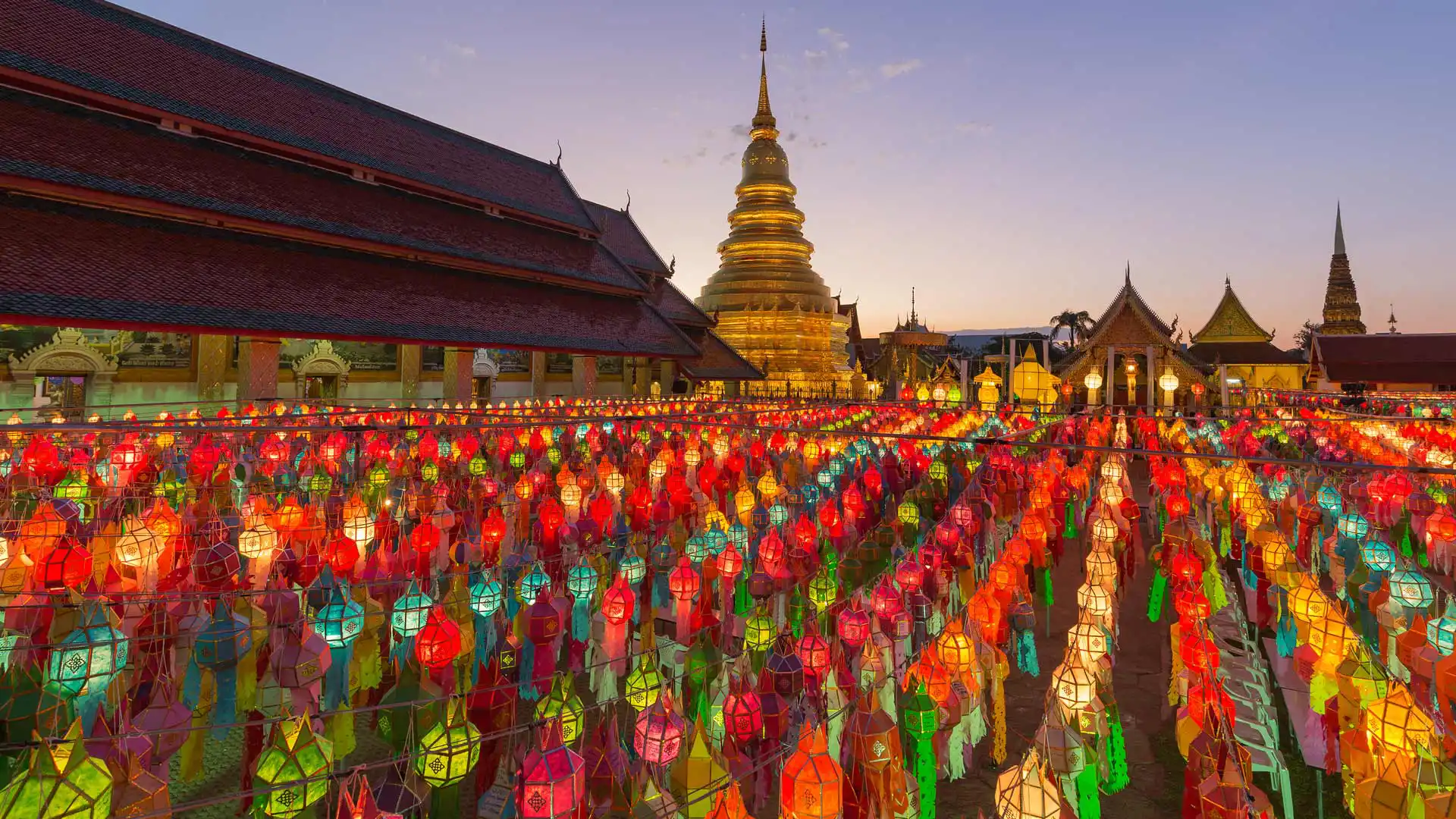哈里朋柴佛塔寺的彩色灯笼, 南奔府, 泰国 Colorful lanterns at the temple of Wat Phra That Hariphunchai, Lamphun, Thailand (© MR. ANUJAK JAIMOOK/Getty Images)
哈里朋柴佛塔寺的彩色灯笼, 南奔府, 泰国 Colorful lanterns at the temple of Wat Phra That Hariphunchai, Lamphun, Thailand (© MR. ANUJAK JAIMOOK/Getty Images)
满天心愿 Sky full of wishes
庆祝义蓬节
如果一盏天灯能承载你的心愿,你会许下什么?今晚,在泰国北部,义蓬节为你带来这样的机会。这个延续数百年的兰纳传统,在农历十二月举行,人们点亮孔明灯以纪念佛陀。相传每一盏灯都能带走厄运,照亮通往美好未来的道路。孩子们扶稳灯架,长者低声祈福,成百上千的灯火缓缓升起,越过树梢,点亮夜空。同一轮满月下,南方的水灯节也在进行,烛光点点的花船在水面缓缓漂流。
在泰国北部的南奔府,有一座历史悠久的寺庙——哈里朋柴佛塔寺,它是欣赏义蓬节灯会的热门地点。寺庙的历史可以追溯到公元897年,当时哈里朋柴国王建造这座佛塔,用来供奉佛陀的一缕头发。佛塔至今仍矗立在寺院中央,周围的建筑则在后来的几个世纪逐渐完善,形成了如今的格局。寺庙的殿堂里,精美的木雕工艺展示了代代匠人的技艺。每年义蓬节期间,成千上万盏孔明灯缓缓升空,古老的祈愿与现代的祝福在夜空交织,让人仿佛穿越千年,感受文化与信仰的延续。
锦里街上悬挂的红色中国灯笼,成都,中国四川省 Red chinese lanterns hanging in Jinli street, Chengdu, Sichuan, China (© Philippe LEJEANVRE/Getty images)
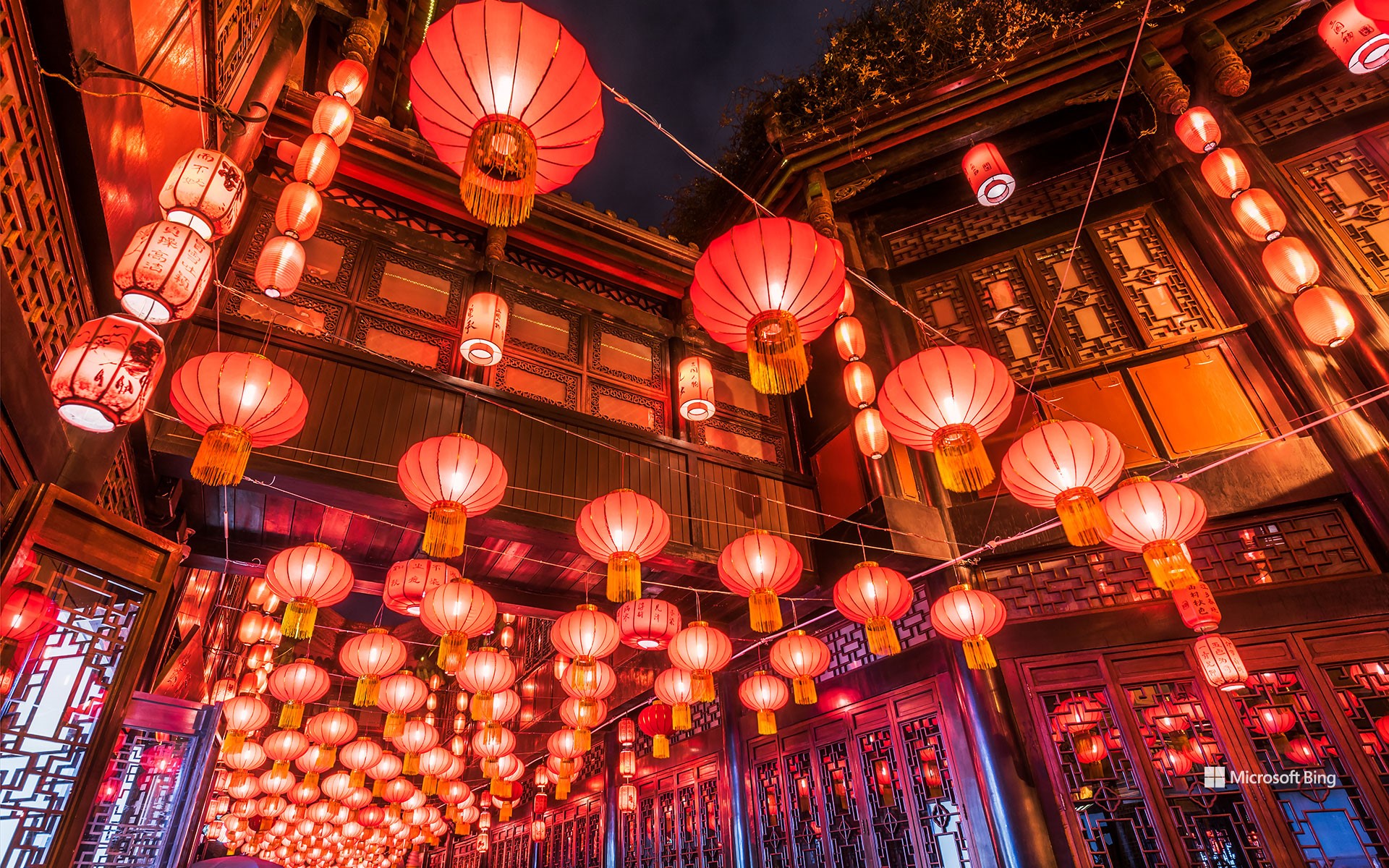
锦里街上悬挂的红色中国灯笼,成都,中国四川省 Red chinese lanterns hanging in Jinli street, Chengdu, Sichuan, China (© Philippe LEJEANVRE/Getty images)
点亮一盏明灯,愿您万事顺意! Hang a lantern and wish you all the best!
元宵节
正月是农历的元月,古人称“夜”为“宵”,正月十五是一年中第一个月圆之夜,所以称正月十五为“元宵节”。元宵节习俗自古以来就以热烈喜庆的观灯习俗为主。
这次我们为您展示的是挂满灯笼的成都锦里古街街景。值此佳节,我们的城市灯光摇曳,欢声笑语,在正月十五晚上更是热闹非凡。除了吃汤圆、观花灯,猜灯谜之外,耍龙灯也是元宵节的习俗之一,今年是龙年,想必很多地方都有龙灯或者龙舞表演吧!
除夕夜的中国新年灯笼 Chinese new year lanterns (© Toa55/Getty Images)
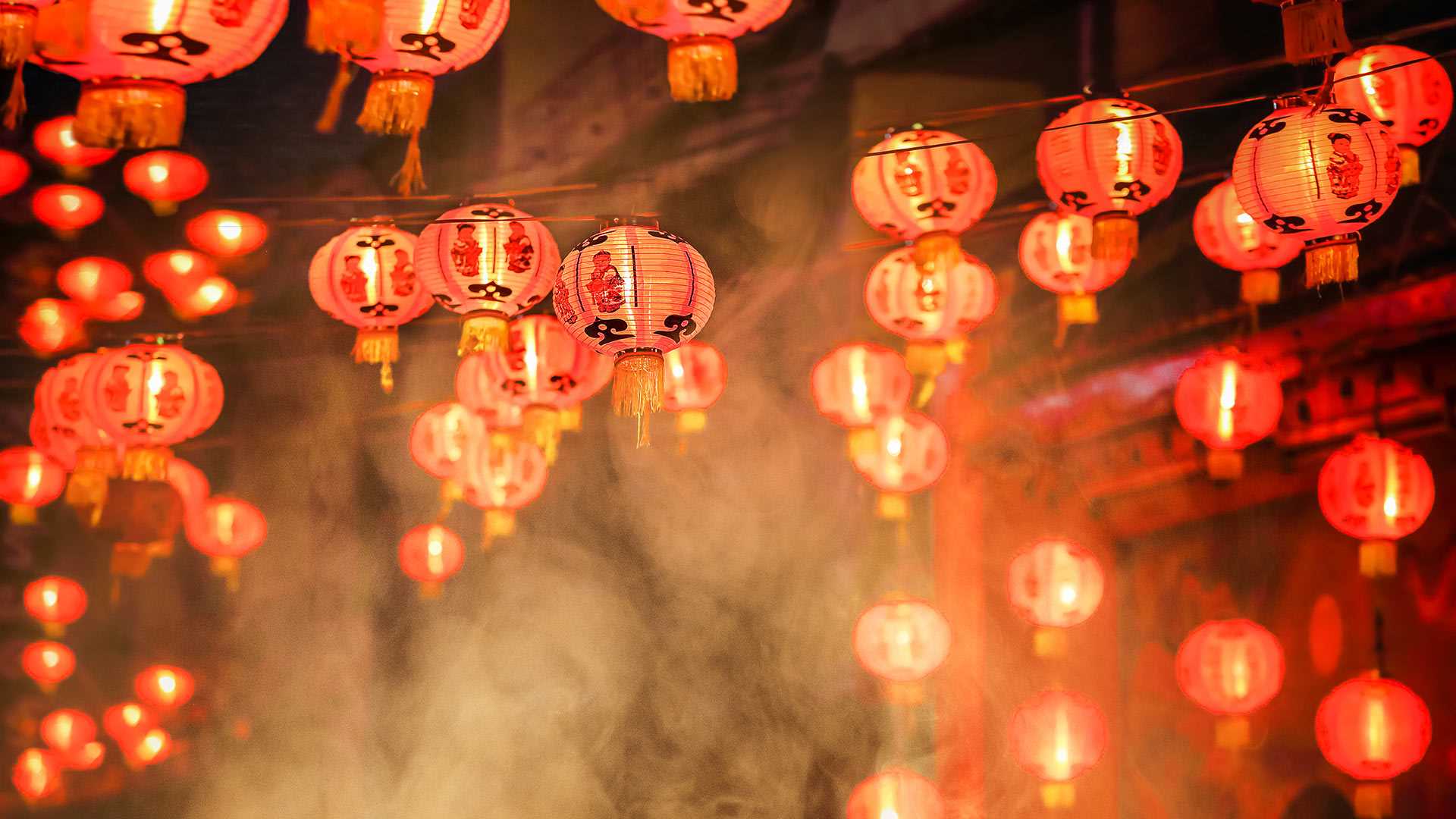
除夕夜的中国新年灯笼 Chinese new year lanterns (© Toa55/Getty Images)
爆竹声中一岁除 Happy Chinese New Year's Eve
阖家团圆迎新春
“除夕”是岁除之夜的意思,又称大年夜、除夕夜、除夜等,时值年尾的最后一个晚上。除夕自古就有守岁、团圆饭、贴年红、挂灯笼等习俗,经久不息。比如我们所熟知的贴年红年红,是春联、门神、窗花、年画、福字等过年时所贴的红色喜庆元素统称。过年贴年红(挥春),是中国民间由来已久的风俗,寄托了人们对幸福生活的向往,对美好未来的祝愿。除夕守岁也是年俗的重要活动之一,守岁之俗由来已久。守岁的民俗主要表现为所有房子都点燃岁火,合家欢聚,并守着“岁火”不让熄灭,等着辞旧迎新的时刻,迎接新年到来。
成都街头的红灯笼,中国四川省 Defocused view of Chinese red lantern in the street chengdu, Sichuan province, China (© kiszon pascal/Moment/Getty Images)
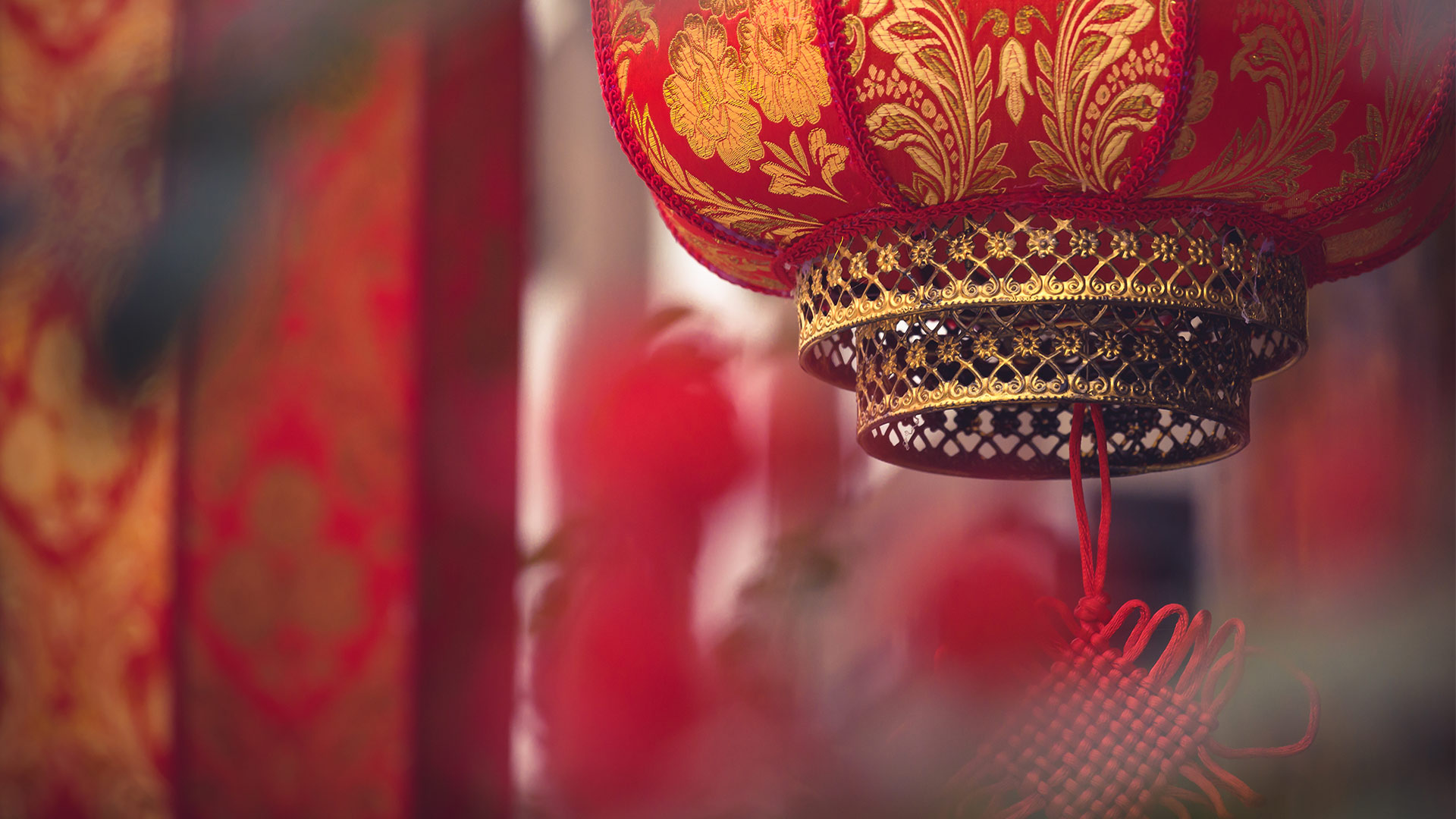
成都街头的红灯笼,中国四川省 Defocused view of Chinese red lantern in the street chengdu, Sichuan province, China (© kiszon pascal/Moment/Getty Images)
点亮一盏花灯 Light a lantern!
Light a lantern!
On the 15th day of the first lunar month, two weeks after Chinese New Year, the Chinese Lantern Festival is celebrated. It marks the first full moon of the new lunar year and the end of the Chinese New Year period.
点一盏灯笼!
排灯节上点亮的灯笼, 印度孟买 Lanterns illuminated for the Diwali festival, Mumbai, India (© RAMNIKLAL MODI/Shutterstock)
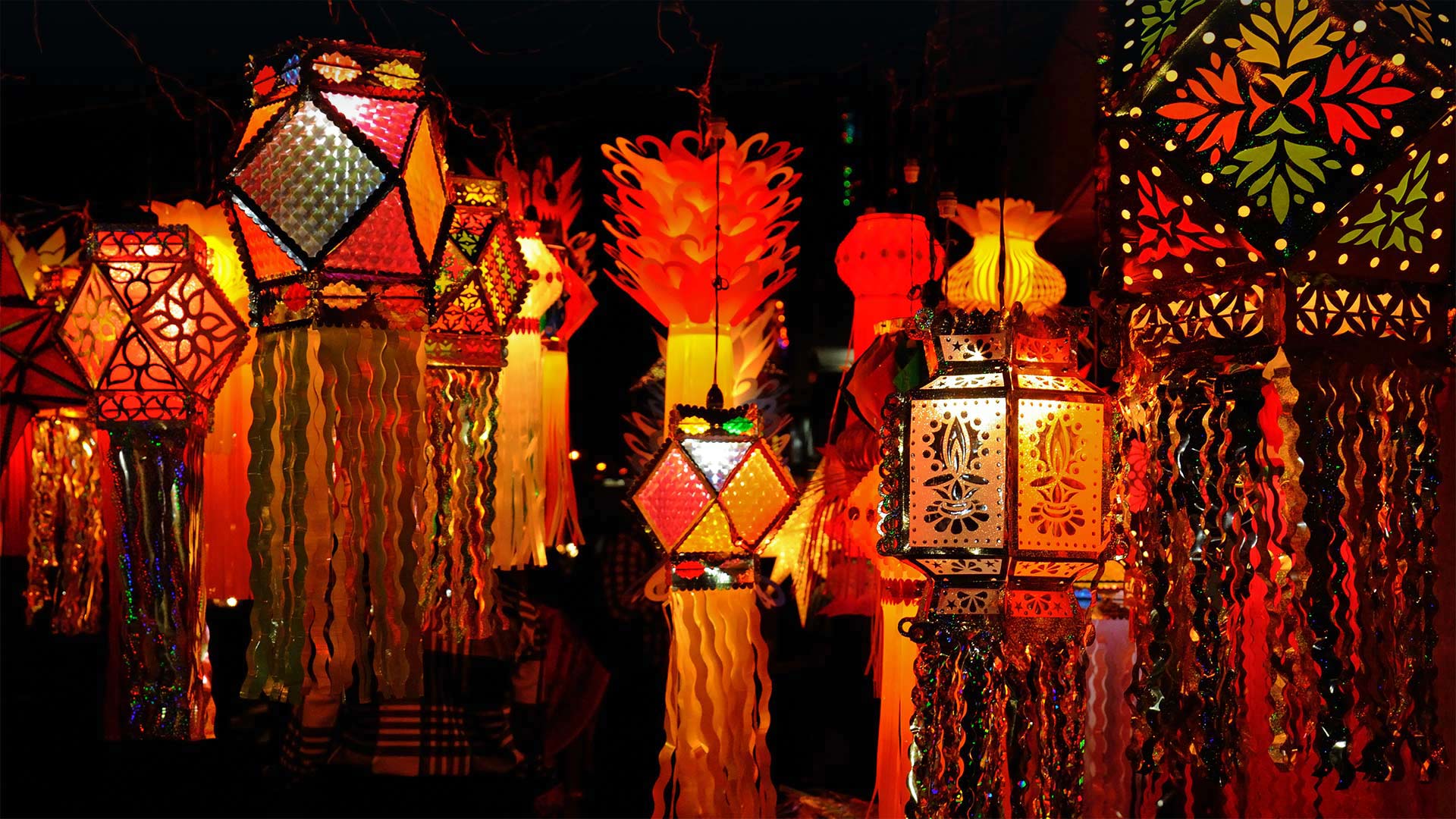
排灯节上点亮的灯笼, 印度孟买 Lanterns illuminated for the Diwali festival, Mumbai, India (© RAMNIKLAL MODI/Shutterstock)
Diwali Festival
Diwali is a five-day celebration of the symbolic victory of light over darkness, good over evil, and knowledge over ignorance. Though Diwali is one of the most important festivals of the Hindu faith, it is also embraced by Sikhs, Jains, and even some Buddhists. Celebrants often decorate their homes with oil lamps called diyas and create colorful patterns on the floor known as rangolis. Streets, markets, temples, and other public spaces are also illuminated with hanging lanterns like those seen in our homepage photo.
Each day of the festival has its own significance, but day three—called Lakshmi Pujan—is considered the main event. Lakshmi is the Hindu goddess of wealth. To prepare for Lakshmi Pujan, people clean their homes to welcome Lakshmi's blessings of prosperity and happiness. Diwali celebrations in 2021 last until November 6, so there's still time to embrace the light.
排灯节
排灯节是为期五天的庆祝活动,象征着光明战胜黑暗,善良战胜邪恶,知识战胜无知。虽然排灯节是印度教信仰中最重要的节日之一,但锡克教徒、耆那教徒甚至一些佛教徒也喜欢排灯节。庆祝者经常用油灯装饰他们的家,油灯被称为diyas,并在地板上创造出五颜六色的图案,称为rangolis。街道、市场、庙宇和其他公共空间也会像我们主页上的照片一样悬挂着灯笼。
节日的每一天都有它自己的意义,但被称为Lakshmi Pujan的第三天被认为是主要活动。拉克希米是印度的财富女神。为了准备Lakshmi Pujan,人们清洁他们的家园,欢迎Lakshmi繁荣和幸福的祝福。2021年排灯节的庆祝活动一直持续到11月6日,所以还有时间拥抱光明。
挂在锦里街上的红灯笼,中国成都 Red lanterns hanging in Jinli Street, Chengdu, China (© Philippe LEJEANVRE/Getty Images)
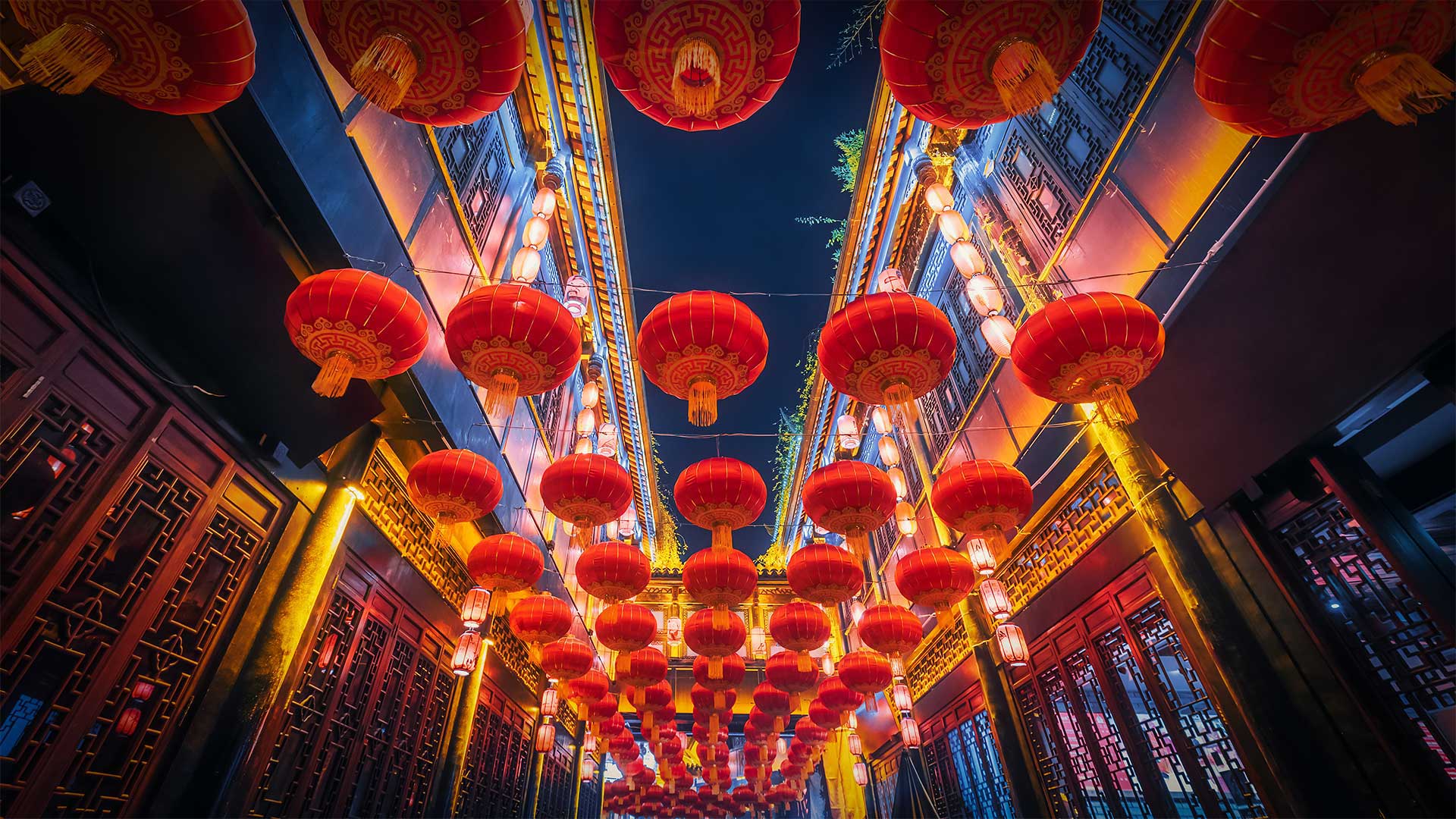
挂在锦里街上的红灯笼,中国成都 Red lanterns hanging in Jinli Street, Chengdu, China (© Philippe LEJEANVRE/Getty Images)
Lighting the way to a new year
The Lantern Festival marks the final day of Lunar (aka Chinese) New Year celebrations, which began this year on February 12 when we ushered in the Year of the Ox. Traditionally, the day of the festival is filled with dancing, firecrackers, children's games, and food—including tangyuan, a desert made from balls of rice flour and generally loaded with sweet fillings. After sundown, celebrants gather to light or observe lanterns like the ones we see here in Chengdu, China.
